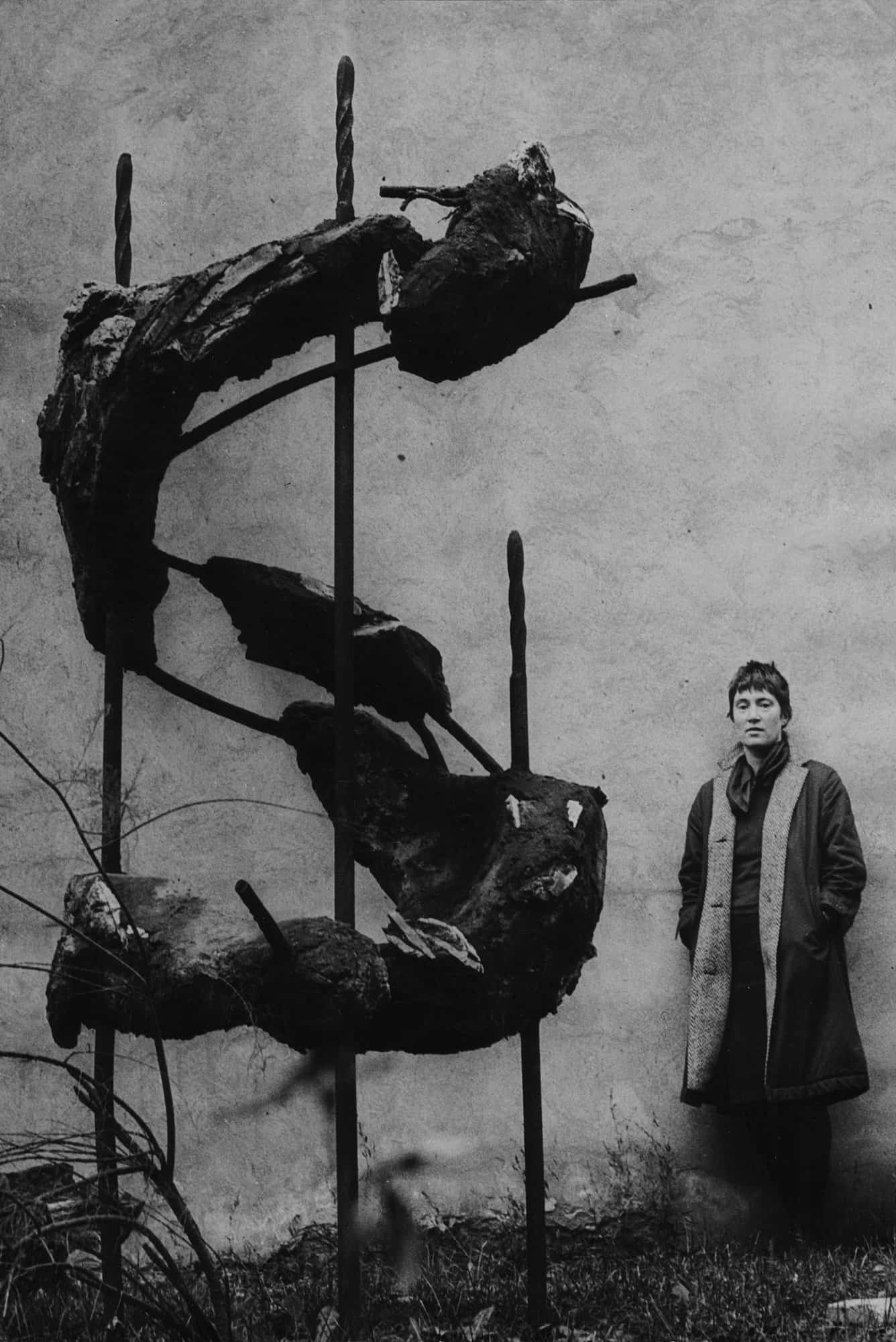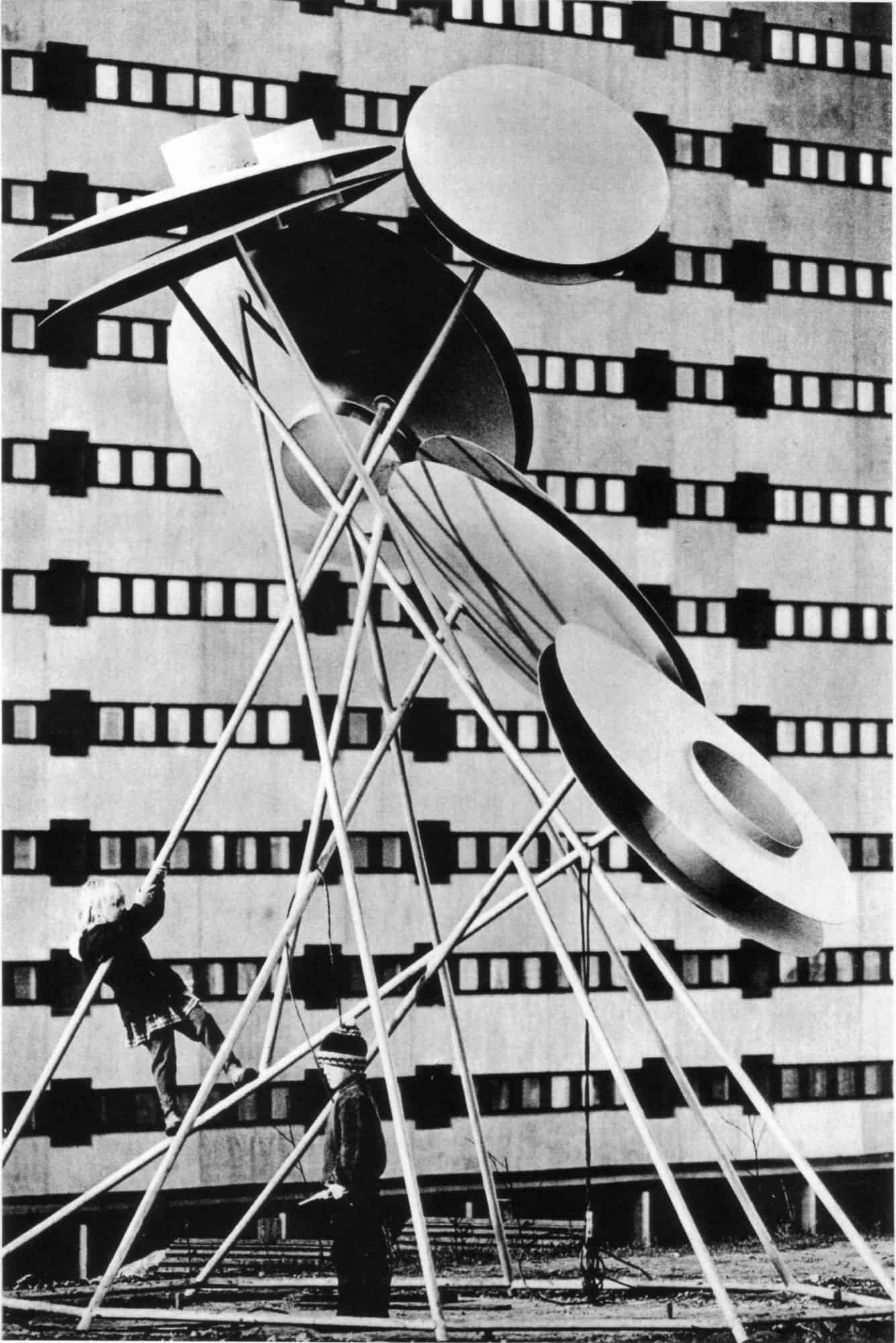Ten years have passed since the death of Magdalena Więcek – an artist who is among the most prominent figures in post-war Polish art. She belongs to the group of Polish female sculptors whose work is already considered a crucial element in the history of the neo avant-garde (alongside such well-known names as Alina Ślesińska, Wanda Czełkowska, Barbara Zbrożyna and Maria Pinińska-Bereś). These female artists had their say in creating a new definition of sculpture, which departed from the traditional understanding of this form of art as creating monuments and solid objects. Instead, they emphasised abstract, minimalist, spatial, open and “airy” forms giving an impression of movement. Magdalena Więcek worked as a sculptor for almost sixty years, creating her works in public spaces and as a part of natural landscape. She is also the author of numerous installations, smaller objects, drawings and architectural plans. She was also a university teacher, an acclaimed figure among the Warsaw’s intelligentsia and a well-known representative of the art from the period of political thaw in Poland (with a strong relationship to the Krzywe Koło Gallery).

Magdalena Więcek , Biennale of Spatial Forms in Elblag, 60s, photo Sławek Biegański, courtesy of Magdalena Więcek Estate
Więcek was born in 1924 in Katowice. The industrial ambience of the city, whose entire population worked in the mining and smelting industry, clearly influenced Magdalena’s artistic ambitions and her choice of materials. She often used steel or light aluminium, as well as huge unmachined stones1. People who recollect the artist’s life and work often call her “Magda the miner”2. She created her early works in the late 1940s when she was still a student at the State Higher School of Visual Arts in Sopot under Marian Wnuk. Later on, she studied at the Academy of Fine Arts in Warsaw. Like many other artists, she was influenced by socialist realist doctrine (which dominated the Polish reality in the period from 1949 to 1954). Magdalena’s early sculptures were plaster and clay monuments of workers and udarniks, as well as busts of influential politicians of that period. Signs of the artist’s unique style could, however, already be seen in these early works. There was something dynamic about them, resembling sculptures by Auguste Rodin and Xawery Dunikowski. This early period in Więcek’s activity symbolically ended with her work “The Mother” displayed at an exhibition in the Arsenal Gallery in Warsaw in 1955 where it received an award. The sculpture represents a woman with a baby on her lap, and is carved out of a block of wood. She is kneeling and raising her arm in an expressive gesture, which can be interpreted both as despair and triumph (perhaps in the moral and ethical dimension). Her lips are wide open, which suggests a desperate scream. This sculpture is very expressive and bears some signs of deformation. It evokes memories of the atrocities of war, particularly in the context of the title of the aforementioned exhibition: Against war, against fascism.
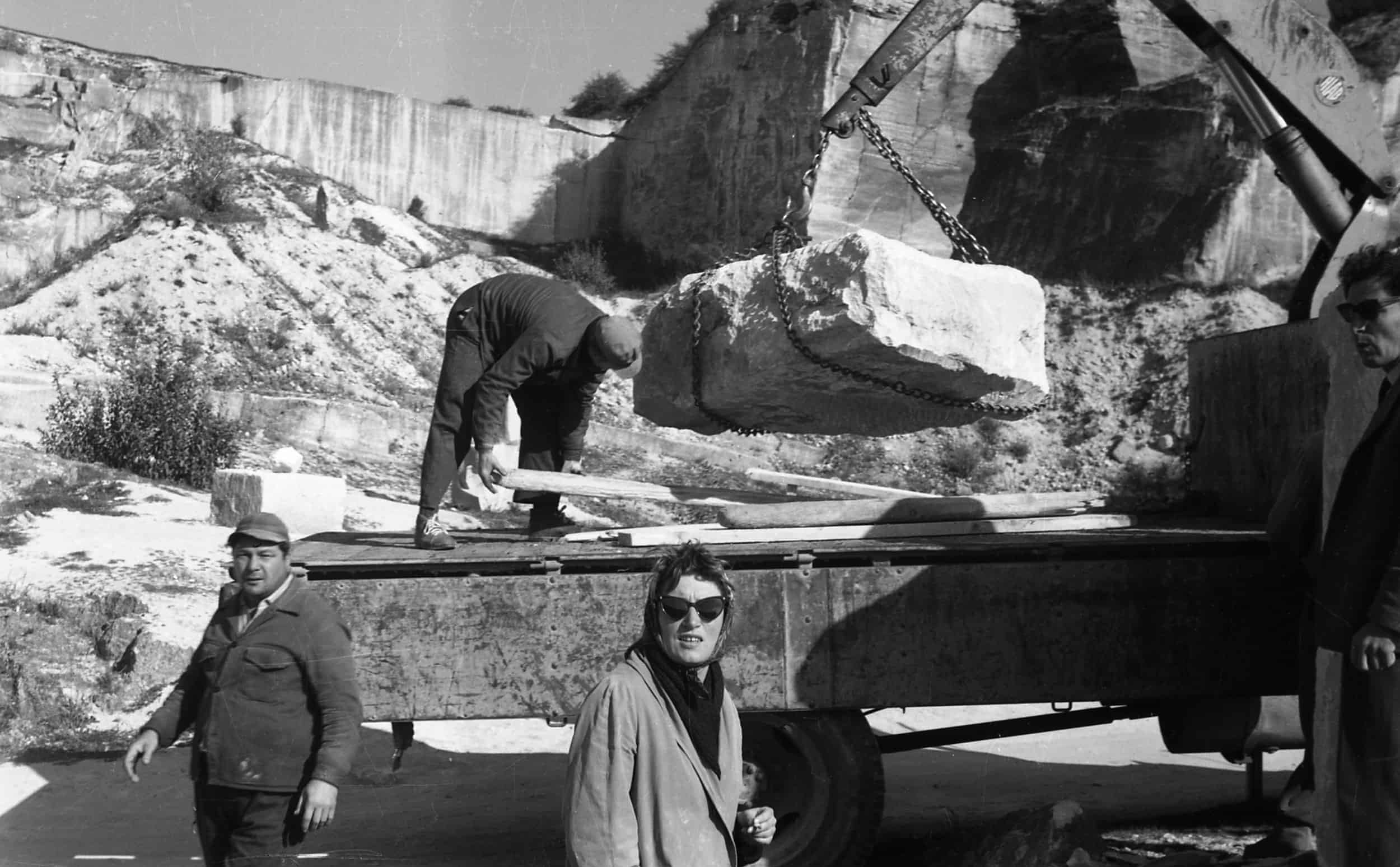
Magdalena Więcek, Quarry St. Margarethen (Burgenland, Austria), 1963, courtesy of Magdalena Więcek Estate
In the 1950s the political thaw came to Poland and communist restrictions eased off. Socialist realism made room for new forms of art. Informel promoted by the circles related to Tadeusz Kantor gained ground at that time. Inspirations with works by Henry Moore were clearly visible in sculpture3. In the mid-1950s Magdalena Więcek started her relationship with Klub Krzywego Koła in Warsaw, which gave her an opportunity to cooperate with freethinking artists. She displayed her works along with Zbigniew Dłubak, Marian Bogusz and Stefan Gierowski. When we look at her works we realise how deeply she was inspired by Henry Moore, especially by the way her sculpted figures became more and more malformed and abstract. “Protest” created in 1957 reflects this inspiration. It features a figure that is broken, malformed and expresses a political message. Perhaps the figure gives up and succumbs to overbearing immorality. Another possible interpretation is that the work represents the war experiences that Magdalena’s family went through. The form of these sculptures resembles “The Exhumed”, by Alina Szapocznikow created at roughly the same time. This period in Magdalena’s work should also be associated with “Florals” and “Close to the Earth” with their organic shapes, that only suggest but do not reproduce human figures or animals. In general, at that time her sculptures visibly detached themselves from the earth and their movement was clearly noticeable. They are placed on cast-iron frames and nothing more. Concrete, plaster, cement, reinforced concrete were materials which the artist liked and used with pleasure. Works from that period are brutalist in their form but, at the same time, already reflect how Magdalena’s totally different way of thinking about sculpture. She ceased creating merely monolithic structures and focused on light, open forms which consisted of multiple elements.
Magdalena Więcek with sculpture “S symbol of Sulfur”, 1962, concrete, steel, 300 cm, courtesy of Magdalena Więcek Estate
Magdalena Więcek, Lotnia, 1967, steel, dimensions unknown, courtesy of Magdalena Więcek Estate
One of the artist’s most famous outdoor sculptures is “Upward Flight – Spatial Composition” created in 1967. This intriguing structure was first shown at the Biennial of Spatial Forms in Elbląg4 and later at the “Trans-Atlantyk” exhibition organised at the Museum of Modern Art in Warsaw and in Sao Paulo. While designing the “Upward Flight – Spatial Composition” Magdalena Więcek cooperated with workers from a mechanical plant and this inspired her to use polychrome metal as the basic material for this particular work. The artist created a sculpture which did not incorporate a bulk or block of material despite industrial materials and inspirations. She managed to create a light structure, which seemed to be floating above the ground and moving in numerous directions. It resembled a soaring bird and seemed to embody the spirit of the avant-garde constructivism.
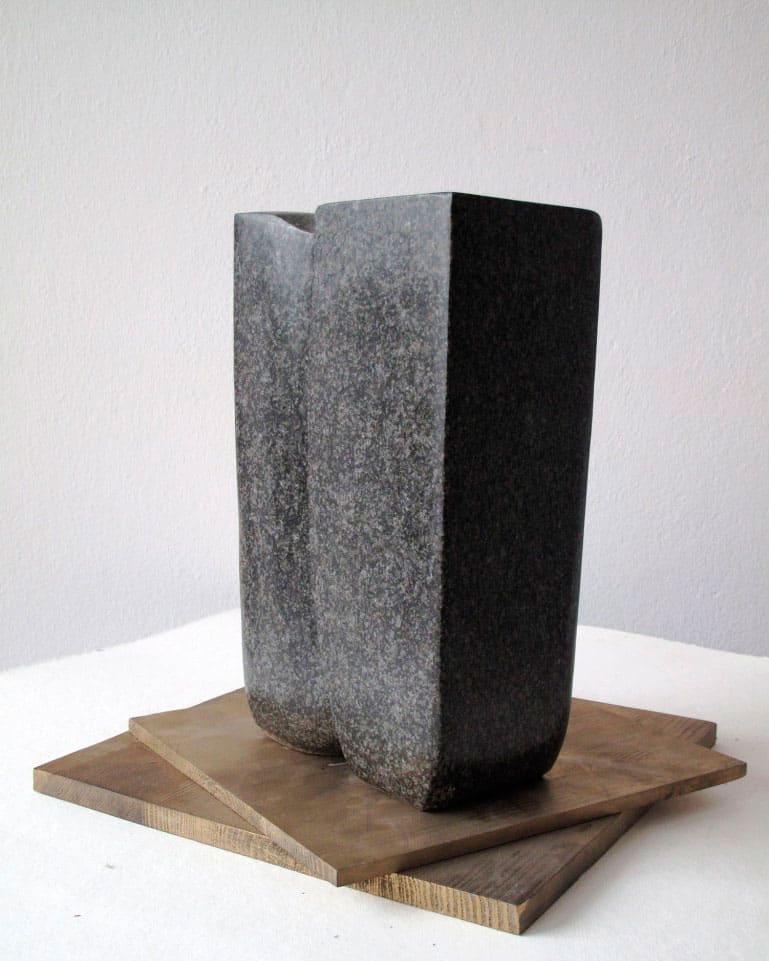
Magdalena Więcek, Dialogue with a stone (IV), 1981, marble, wooden basis, 43 x 20 x 12 cm, courtesy of Magdalena Więcek Estate
The artist expressed her interest in movement and flight through other sculptures as well, for example the smaller brass “Lotna” series created in the late 1960s and early 1970s. These decades were marked by an increased interest in space flights, the Moon landing, futurism and machines. The golden and shiny sculptures of the “Lotna” series consist of spherical shapes, balls, discs and hemispheres. They show us the power and gravity of planets and stars, upset the balance and give an impression of movement. They bring about associations with the outer space and microchemistry and, at the same time, they are reminiscent of sculptures by Constantin Brâncuși – his eggs and abstract birds which soar into the air. In spite of the fact that Magdalena Więcek’s sculptures from this series are more bulky, they remain light and lively. In this respect they do not depart from her outdoor works and metal “Detachments” which depict an explosion, centrifugal force and the rays of refracting light. Among Magdalena’s works made of steel “Helios” and “Rozkwit” (Full bloom) – outdoor sculptures created in 1976 – are considered the most magnificent ones. These works are abstract interpretations of their own titles, but also reflect minimalist approach to objects and space.
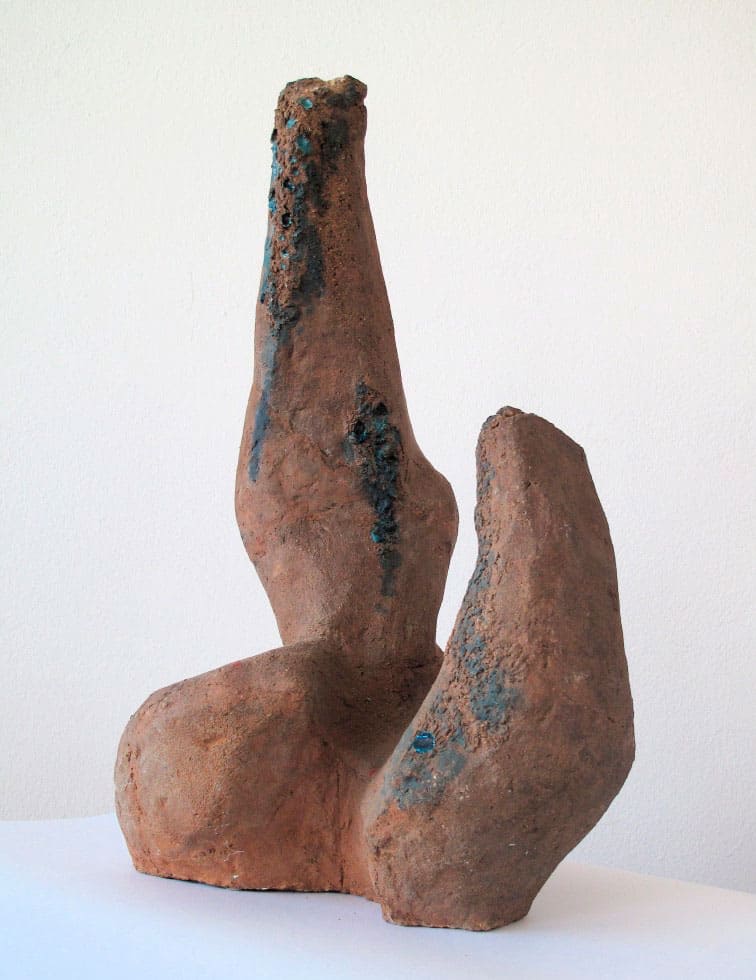
Magdalena Więcek, Nature / Collisions, 1958, ceramic, 57 x 36 x 24 cm, courtesy of Magdalena Więcek Estate
Another huge work series which became the turning point in the work of Magdalena Więcek were “Dialogues with Stone”. The series was created through the relatively long period starting from the late 1970s and ending in the mid-1990s. Sculptures from this series are much closer to organic abstraction and forms developed by Constantin Brâncuși than works from the earlier periods. Magdalena used multicoloured surfaces, decorative marbles and granite. In this particular series she often combined stones of various types and colours. The surface of her sculptures is very smooth and haptic, and as tender as human skin, natural forms and delicate plants. There is a feeling of subtle movement about them, mainly thanks to numerous streamers, incisions and folds. There is more about these forms, however, since all constituent elements disturb the balance, combine themselves and detach from one another, making the works truly dynamic. Many of these sculptures have a complex structure consisting of two or more elements. There are a few main parts in each of them and these parts engage in a characteristic dialogue. The artist invites the audience to observe intimate relationships in the world of inanimate stones.
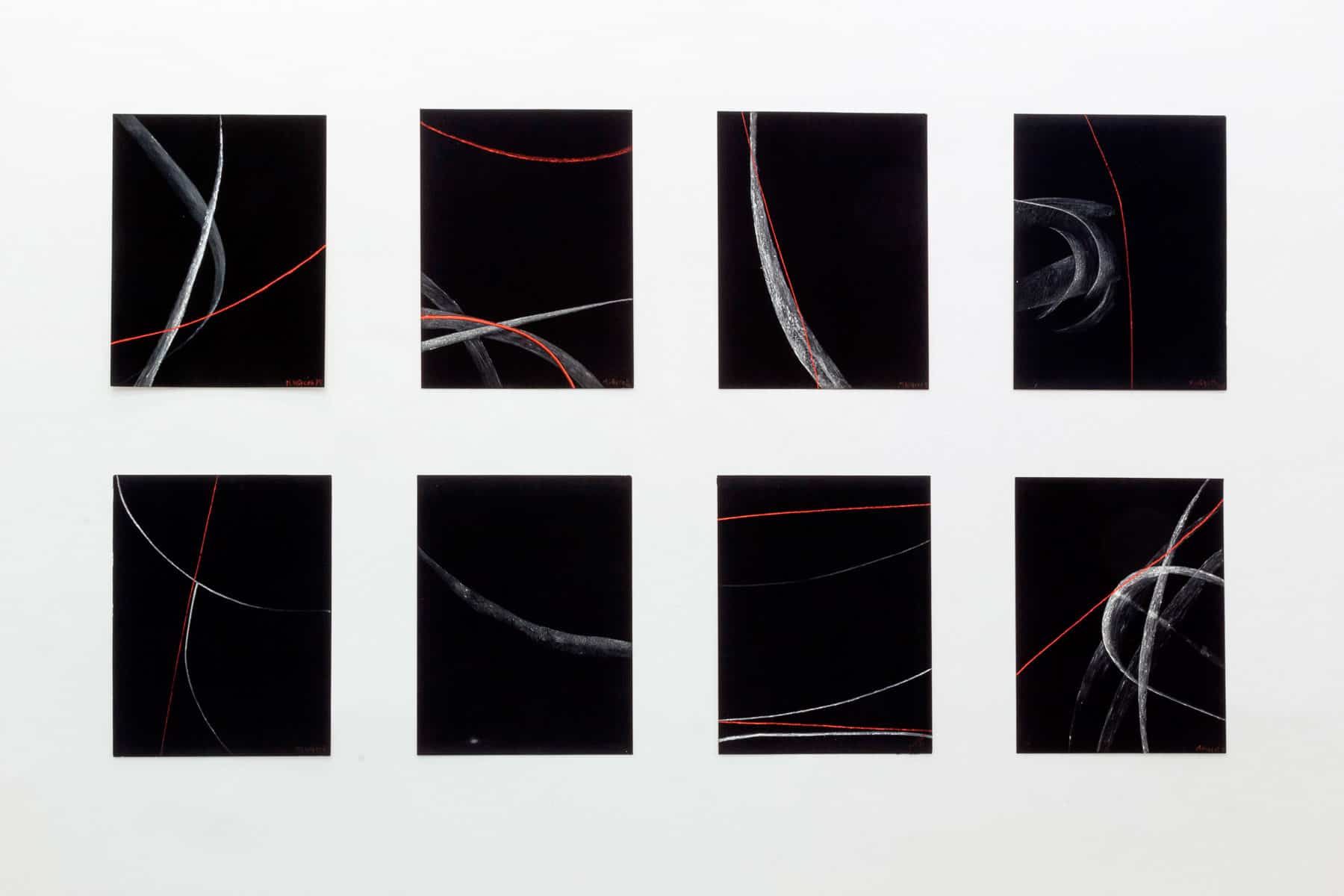
Magdalena Więcek, Untitled, 1979, acrylic on cardboard, 66 x 50 cm, courtesy of Christine König Galerie, Vienna and Magdalena Więcek Estate
Magdalena Więcek did not consider herself a sculptress, but rather a sculptor. Her achievements greatly exceed those of her husband, a Professor at the Academy of Fine Arts. During the time of her artistic activity she was a well-known and respected figure and her works were exhibited widely in Poland and abroad. She was somewhat forgotten in her older years and shortly after her death, but her works and achievements are currently being explored anew. One example, is the exhibition entitled “PAS DE DEUX. Magdalena Więcek & Natalia Załuska” organised at Christine Koenig Galerie in Vienna which juxtaposed Natalia Załuska’s canvasses with large-scale works by Magdalena Więcek made with spray paint and crayons.
PAS DE DEUX Magdalena Więcek & Natalia Załuska
from 22 November 2018 to 19 January 2019
Christine Koenig Galerie in Vienna
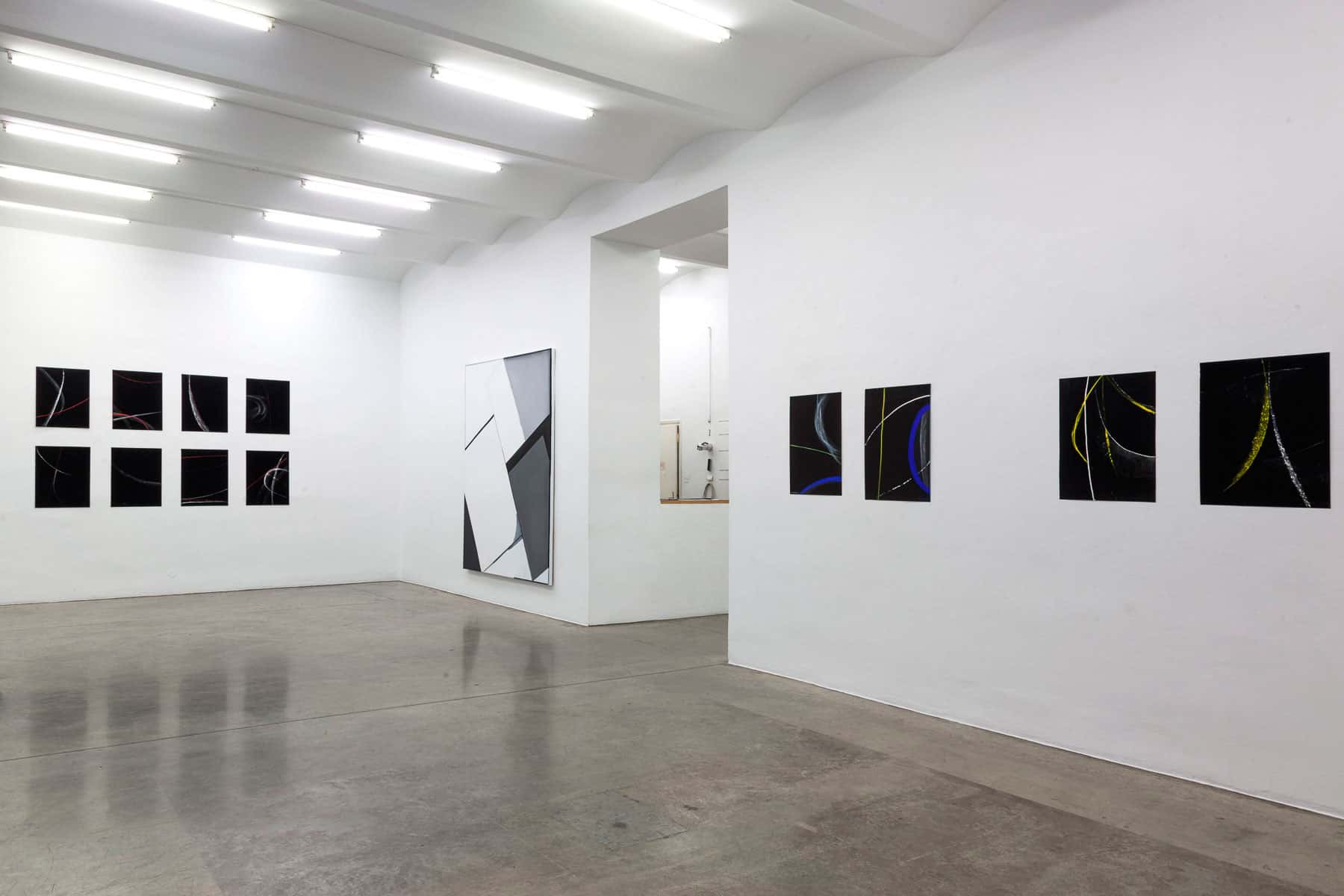
Exhibition view P A S D E D E U X Magdalena Więcek & Natalia Załuska, Christine König Galerie, Vienna 2018
Edited by Contemporary Lynx
1 Inés Muñozcano, An introduction to works of Magadalena Więcek, unpublished.
2 „Magdalena Więcek. Działanie na oko”, ed. Anna Maria Leśniewska, p. 15.
3 This phenomenon was shown at the exhibition entitled “The Power of Nature Henry Moore in Poland” organised in Orońsko in 2018.
4 The Biennial of Spatial Forms in Elbląg – the event presented experimental sculptures in a public space. The Biennial was developed around the constructivist ideas of Władysław Strzemiński and Katarzyna Kobro. The Biennial was organised to reflect and propagate the specific mission, which was: „The communication between sculpture and space, the saturation of space and sculpture, merging the sculpture into space and its interrelation with space – constitute an organic principle of sculpture.”
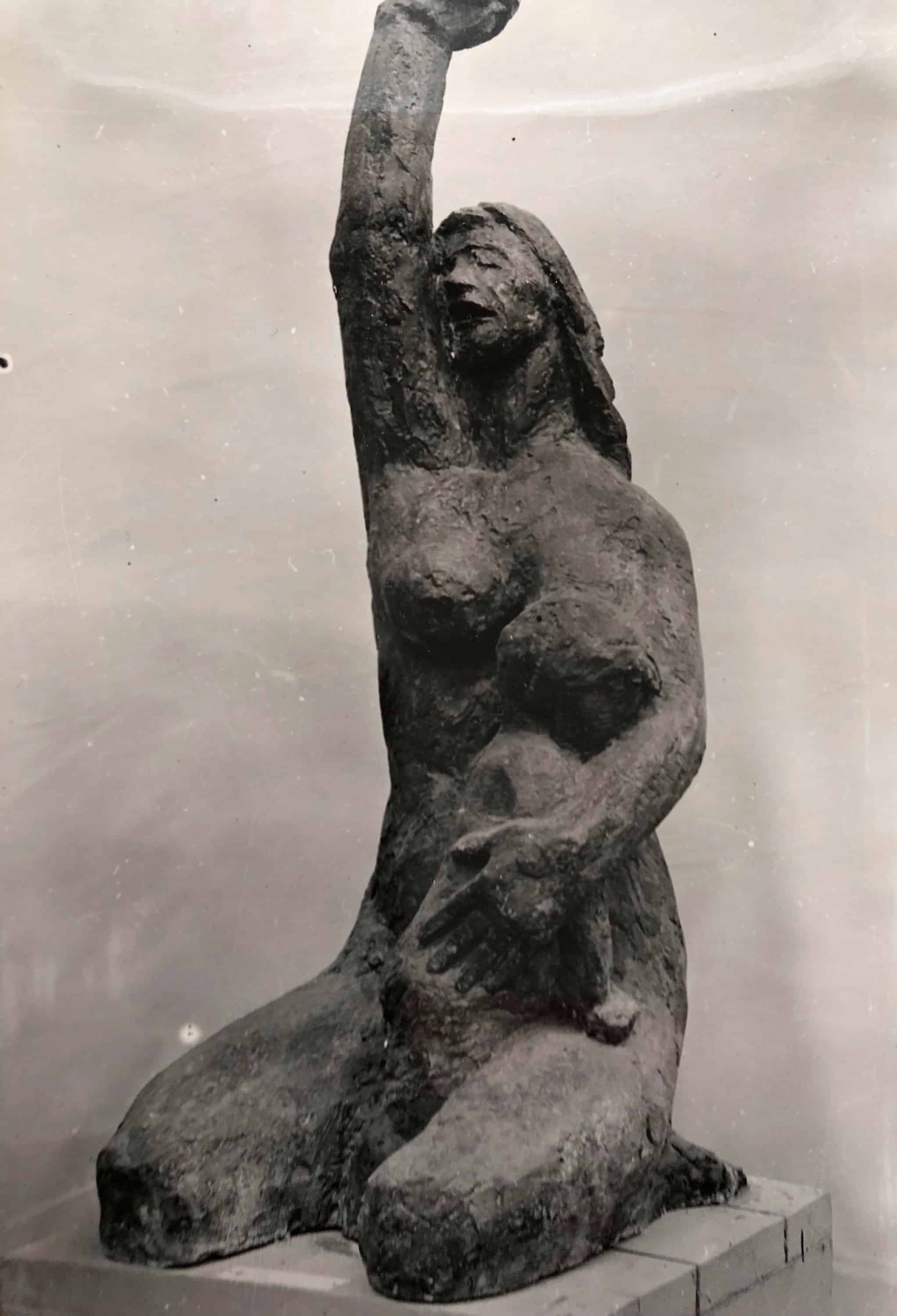
Magdalena Więcek, Matka, 1955, courtesy of Magdalena Więcek Estate


